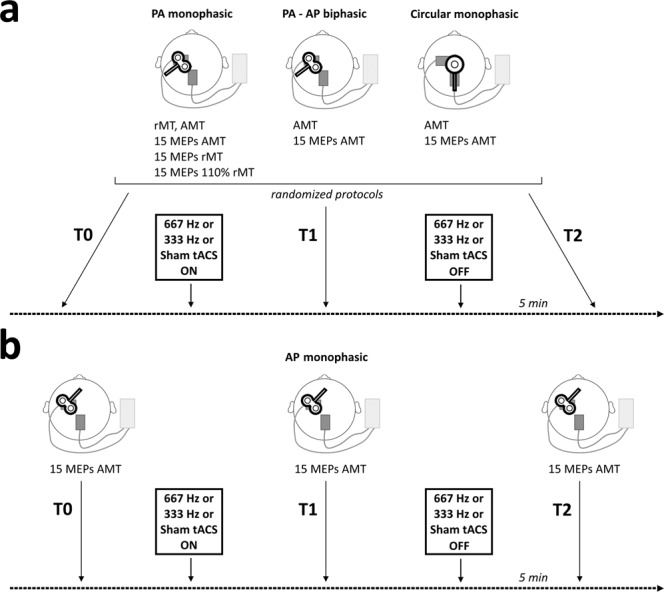Figure 2.

Experimental design. Panel a. In Experiment 1, five different TMS protocols were applied in a randomized order before activating tACS (T0), during tACS (T1) and 5 minutes after the end of tACS (T2) over M1: 1) monophasic TMS pulses delivered at rest through a standard figure-of-eight coil, at the intensity of 100% rMT; 2) monophasic TMS pulses delivered at rest through a standard figure-of-eight coil, at the intensity of 110% rMT; 3) monophasic TMS pulses delivered during mild voluntary muscular contraction through a standard figure-of-eight coil, at the intensity of 100% AMT; 4) biphasic TMS pulses delivered during mild voluntary muscular contraction through a standard figure-of-eight coil, at the intensity of 100% AMT; 5) monophasic TMS pulses delivered during mild voluntary muscular contraction through a circular coil, at the intensity of 100% AMT. Panel b. In Experiment 2, monophasic TMS pulses were delivered during mild voluntary muscular contraction through a standard figure-of-eight coil with an anterior-to-posterior handle orientation at T0, T1 and T2. In both experiments, each participant underwent three randomized sessions in which tACS was delivered at 667 Hz or 333 Hz frequency, or the stimulation was sham. PA = posterior-to-anterior; AP = anterior-to-posterior; AMT = active motor threshold; rMT = resting motor threshold.
